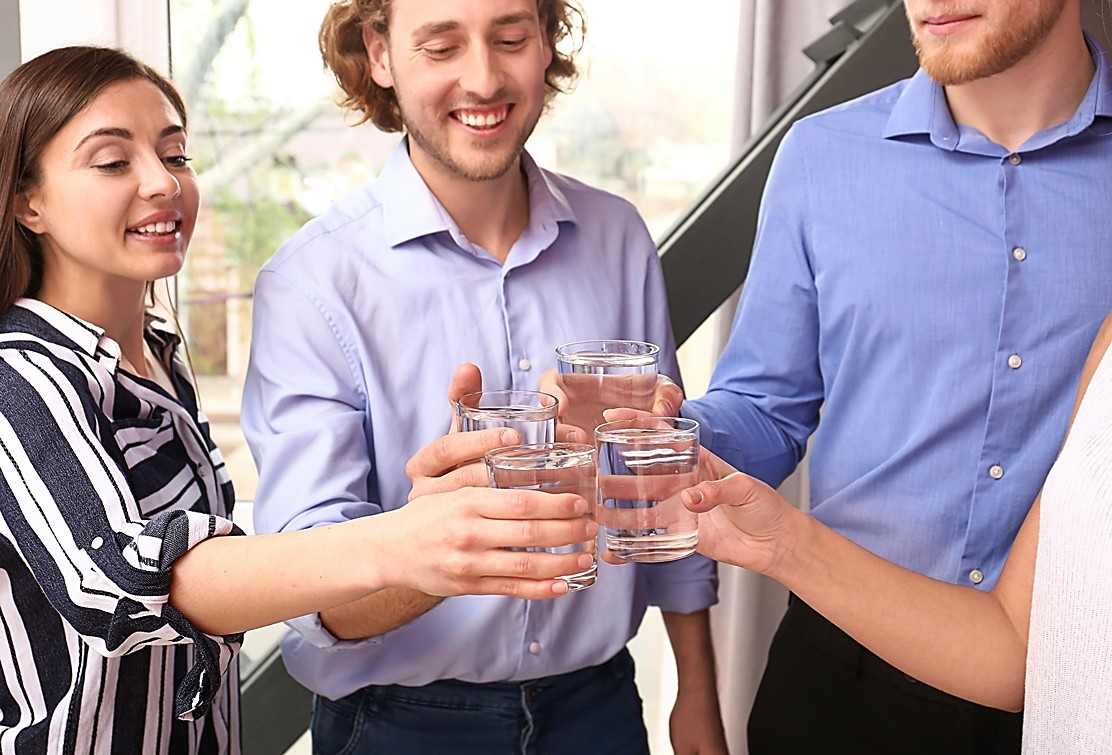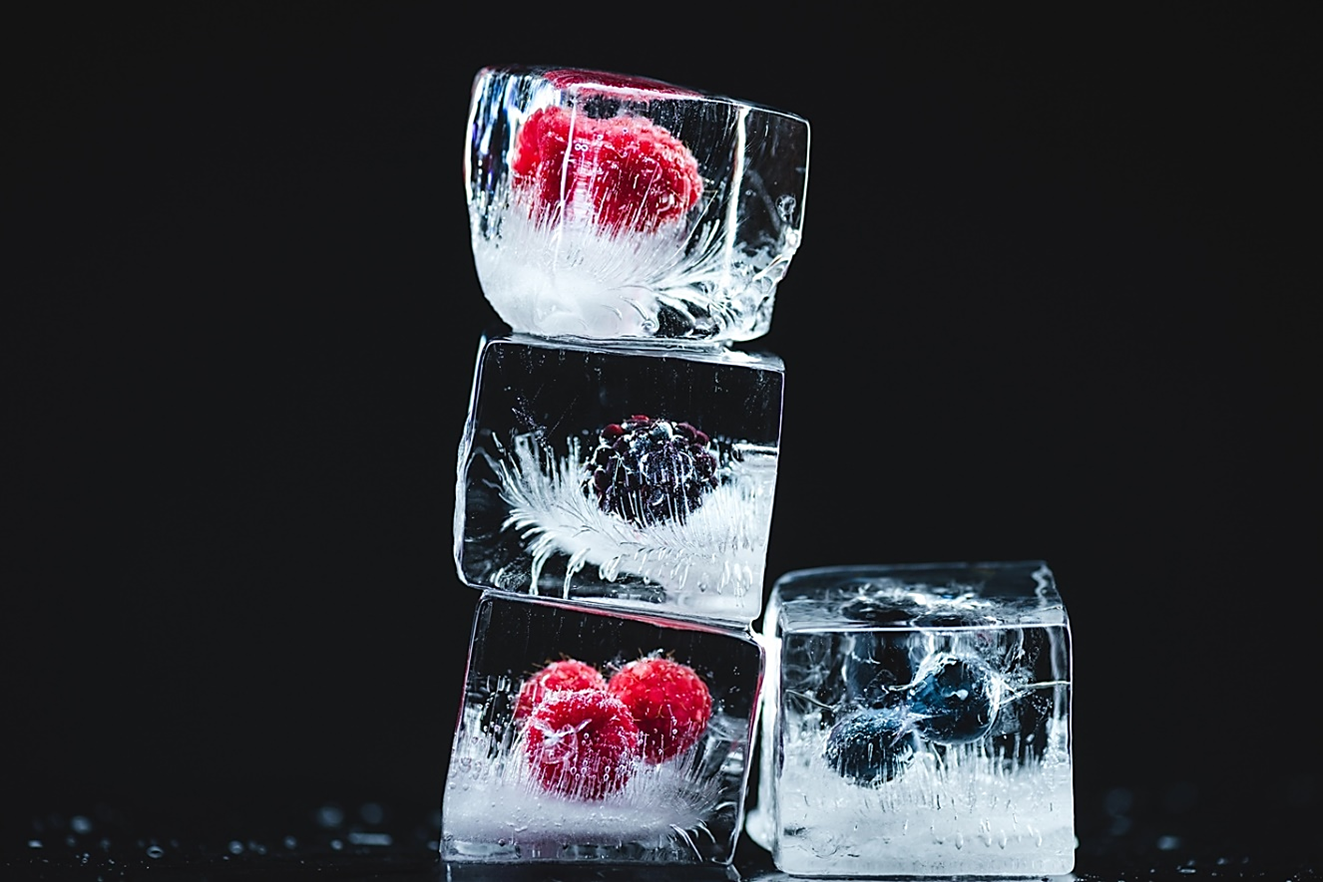
by Fern Shaw | Aug 18, 2025 | bottle fed water coolers, water cooler, Water Coolers
When the mercury rises, staying cool and hydrated becomes essential – whether you’re at home, at work, or out and about. Here’s how to keep your water intake up and your body temperature down.
Workplace Water Cooler Hydration Tips
A water cooler or water dispenser in the office is your best ally during a heatwave.
Visit it regularly to top up your drinking water – setting a reminder can help.
Choose cool (but not icy) drinks to lower your body temperature gradually.
Wear lightweight, breathable clothing and keep a reusable water bottle at your desk for easy refills.
Home Cooling and Hydration from the Water Cooler
Hydration matters as much indoors as it does outdoors.
Keep chilled water ready in the fridge or fill bottles from your water dispenser before freezing for later use.
Encourage children to drink regularly – even if they don’t feel thirsty.
Close curtains or blinds to block heat and ventilate during cooler parts of the day.
Avoid heat-generating activities like cooking or running appliances in peak temperatures.
Opt for light meals such as salads and fruit, which also help maintain hydration.
Staying Hydrated Beyond the Water Cooler
If you’re on the move, plan ahead to beat the heat.
Carry bottled water wherever you go.
Avoid direct sunlight between 11am and 3pm, especially if you’re vulnerable to heat-related illnesses.
Wear loose, light-coloured clothing and a hat for shade.
Seek out cool spaces and take regular breaks from activity.
Replenish lost minerals as well as water – fruit juice or electrolyte drinks can help after excessive sweating.
Remember: Whether you’re at your desk, relaxing at home, or enjoying the outdoors, keeping water nearby is the simplest way to stay healthy, hydrated, and cool during a heatwave. For a reliable water cooler or water dispenser to help make that happen, contact AquAid – we’re always here to keep you refreshed.

by Fern Shaw | Aug 11, 2025 | water cooler, Water Coolers
International Youth Day is all about recognising the vital role young people play in shaping a better, fairer future. This year’s theme: Local Youth Actions for the Sustainable Development Goals (SDGs) and Beyond – puts a spotlight on the power of youth to turn big global ideas into real, local change.*
With over half the world’s population under thirty and youth set to make up the majority of the workforce by 2050, there’s no doubt: young people are the future. They bring fresh ideas, energy and strong community connections – all key to making progress on everything from climate action to gender equality.
But to build this better future, young people need the basics. And that starts with something as simple – and essential – as clean water.
Why Clean Water Matters for Youth
It might not sound revolutionary, but access to a safe, reliable water source can transform young lives, especially in low- and middle-income countries.
Health & Well-being: Clean water means fewer diseases and better overall health, so young people can grow, learn and thrive.
Time for Education: In many communities, young people (especially girls) spend hours every day fetching water. A local water source gives them that time back – time they can spend in school, building their future.
Growing Futures: Access to water lets youth tend to crops or small gardens. These can be sold or used to feed their families, helping them develop trade skills and even start small businesses.
Skills for Life: Whether it’s farming, selling produce, or managing water systems, these experiences help young people gain practical, sustainable skills that benefit their families and wider communities.
Local Action, Global Impact
When we invest in basic needs like water, we’re not just meeting today’s challenges – we’re empowering tomorrow’s leaders. Youth aren’t just the face of the future; they’re the hands shaping it now.
It may seem that something as simple as installing a water cooler has little connection to empowering young people – but that couldn’t be further from the truth.
This International Youth Day let’s remember tremendous change often starts with something small: like a tap that works, a school that’s accessible, or a child who no longer must walk miles for water.
These are just a few of the reasons that, here at AquAid, we continue to support vital work that brings clean, safe drinking water to communities where it’s most needed. By partnering with dedicated charities and helping fund sustainable water projects, the impact goes well beyond the workplace – helping to create the foundations for healthier, more resilient futures.
Because when water flows, so does opportunity.
*source: United Nations – International Youth Day

by Fern Shaw | Aug 7, 2025 | water cooler, Water Coolers
Cycle to Work Day is here and across the UK, many people are choosing to cycle instead of relying on their usual commute. Whether you’re a daily cyclist or a one-off rider giving it a go, there’s no denying the perks – fresher air, better fitness and a happier headspace.
But cycling can be thirsty work. So, before you hop on your bike, make sure you have your hydration plan sorted. A quick sip from your bottled water isn’t always enough – especially if your route is longer or the weather’s warm.
If your workplace has a water cooler, you’re in luck. That post-ride refresh is just a few steps away. Even better if there are chilled options – because nothing quite hits like cool water after a morning pedal.
Cycling + hydration benefits:
- Boosts energy and focus post-ride
- Helps with muscle recovery
- Keeps your body temperature regulated
Don’t forget to replenish water levels regularly – not just once you arrive but throughout the day. It’s the secret to feeling energised and staying productive.
So, gear up, grab your water bottle and start pedalling. Your body, mind (and the planet) will thank you – and your post-ride energy might just rub off on all your workmates too.

by Fern Shaw | Aug 6, 2025 | water cooler, Water Coolers, water dispenser
Celebrated on the first Wednesday of August every year, Playday is all about giving children the chance to get outside, explore and just be children. From park parties to woodland adventures, it’s a brilliant reminder of how important play is for development and fun. But with all that running, climbing and jumping around, staying refreshed is just as important as the play itself.
One thing often overlooked during active days like this? Drinking water.
Parents, organisers & carers – here’s your checklist:
Sunscreen? ✅
Snacks? ✅
Enough water for the day? ✅ Hopefully.
If you’re organising a community event, don’t forget to ensure there is access to a central water dispenser or a watercooler station. It’s a small setup with a big impact. When the little ones are dashing about, it’s crucial they’re stopping now and then to replenish water levels. A couple of easy-to-spot water fountains dotted around the space can also make a real difference, giving children quick access to a refreshing drink without having to stray too far from the fun.
Top tip:
Make it fun! Label their water cooler bottle with names, use colourful cups, or even set up a ‘hydration station’ with a playful theme. You’ll be surprised how much more water children will drink when it’s part of the game.
Play hard. Drink water. Repeat.

by Fern Shaw | Aug 4, 2025 | water cooler, water dispenser
When it’s a cookie, of course! With today being National Chocolate Chip Cookie Day, we thought we’d start the week by celebrating the ultimate biscuit of biscuits. There’s something undeniably comforting about a chocolate chip cookie – whether it’s the warm, slightly gooey kind fresh from the oven or the crisp, crunchy ones that hold their shape. These American-born biscuits never fail to hit the spot.
But here’s a sneaky tip: if you’re treating yourself to a few (or a whole tray – no judgement), don’t forget to stay hydrated too.
Now, tradition tells us that cookies are best served with a cold glass of milk – and sure, that’s still a classic. But if you’re not a dairy fan or just want to feel a little lighter, drinking water alongside your choc chip is a smart choice.
Here’s why water works with cookies (or any biscuits for that matter):
- It cleanses your palate, so every bite tastes just as good as the first.
- It keeps you hydrated, especially if you’re indulging in more than one.
- It helps balance the sweetness and richness – especially useful with those triple-choc versions.
Let’s face it, cookies are delicious, but they can be a little dry (think undunked shortbread). After a few bites, you might find yourself reaching for a glass of something cool. That’s where the trusty watercooler comes in. It’s no longer just a spot for casual chats – it’s your go-to companion when the cookie craving hits.
Whether you’re on a tea or coffee break, topping up your water at work, or baking up a storm at home, having a water dispenser close by is a simple and easy way to keep refreshed and maintain good hydration.
So go ahead, have that cookie (or three). Just chase it down with a glass of cool water and you’ll feel far better for it.

by Fern Shaw | Jul 30, 2025 | water cooler, Water Coolers
As a blogista, one would imagine that I love the internet or the worldwide web. You’d be right. It’s packed to capacity with the most incredible information and makes research interesting, amusing, at times alarming and can turn one into a sniffer dog that any contraband sniffing beagle would envy – (all those leads!)
Some time ago, I read one of what I call, Snopes-worthy-at-a-glance chain *shudder* mails. Recently, while researching, I came across another take on the ice-cold water debate, one I hadn’t heard of before.
The First Drinking Ice Water Theory I read is that if you are all hot and bothered and need to cool down, instead of chug-a-lugging litres of brain freezingly cold water, you should rather drink room temperature water (which is disingenuous, because what if your ‘room’ at the time is an Arctic wasteland? Hmf!). The reason for this is that your body works hard to regulate your ‘core’ temperature. Picture the scene:
You’ve just vaulted up two flights of stairs wearing your spencer and Ugg boots. You get to the landing, leopard crawl down the corridor, reach your water dispenser station, roll onto your back underneath the water cooler, open the tap, a steady stream of water from source pouring refreshingly down your gullet. Now your body is hot. The water is cold. So, whereas you are hydrating your body, which is what your body is asking for, your body now must work double time to ‘heat up’ the water to your core temperature, which is baaad. Or so the chain mail said. I am, (of course), paraphrasing (a lot). I think, for this next one, I don’t have to draw a scenario for you.
The Second Drinking Ice Water Theory is just plain funny – ha ha and peculiar. According to this zinger and I’m quoting, “Drinking Ice Water after a meal … will solidify the oily stuff that you have just consumed. Once this ‘sludge’ reacts with the acid, it will break down and be absorbed by the intestine faster than the solid food.”
Anyhow, so of the two, which is absolute Hogwarts (sorry!) hogwash and which, if any, of the two, have an element of truth in them? I believe the answer to both is a ‘what’s good for you coupled with common sense’ thought process.
Personally I tend to believe the first theory – if our bodies are ‘normally’ at about 37C° and you’ve exerted yourself which means that your body temperature us higher; then with ice water being around 0C°, it would make sense that your body has to work harder to regulate the temperature of the cold water to, rather ironically, cool you down.
So, on this, I’d suggest that if you do decide to Rocky it up the stairs, dressed like Bradley Cooper in The Silver Linings Playbook, for reasons known only to you; by all means perch next to the water cooler, just don’t guzzle. Pour yourself a cup of cool water and drink it slowly.
As for the ‘sludge’ that ice water turns ‘the oily stuff’ into theory, I truly, for once, don’t have a comeback for this marvel of silly.
Keen on having chilled, cool, ambient temperature or even piping hot water available immediately? You need look no further than the UK’s leading water cooler supplier: AquAid. You’re welcome. Drink up!






